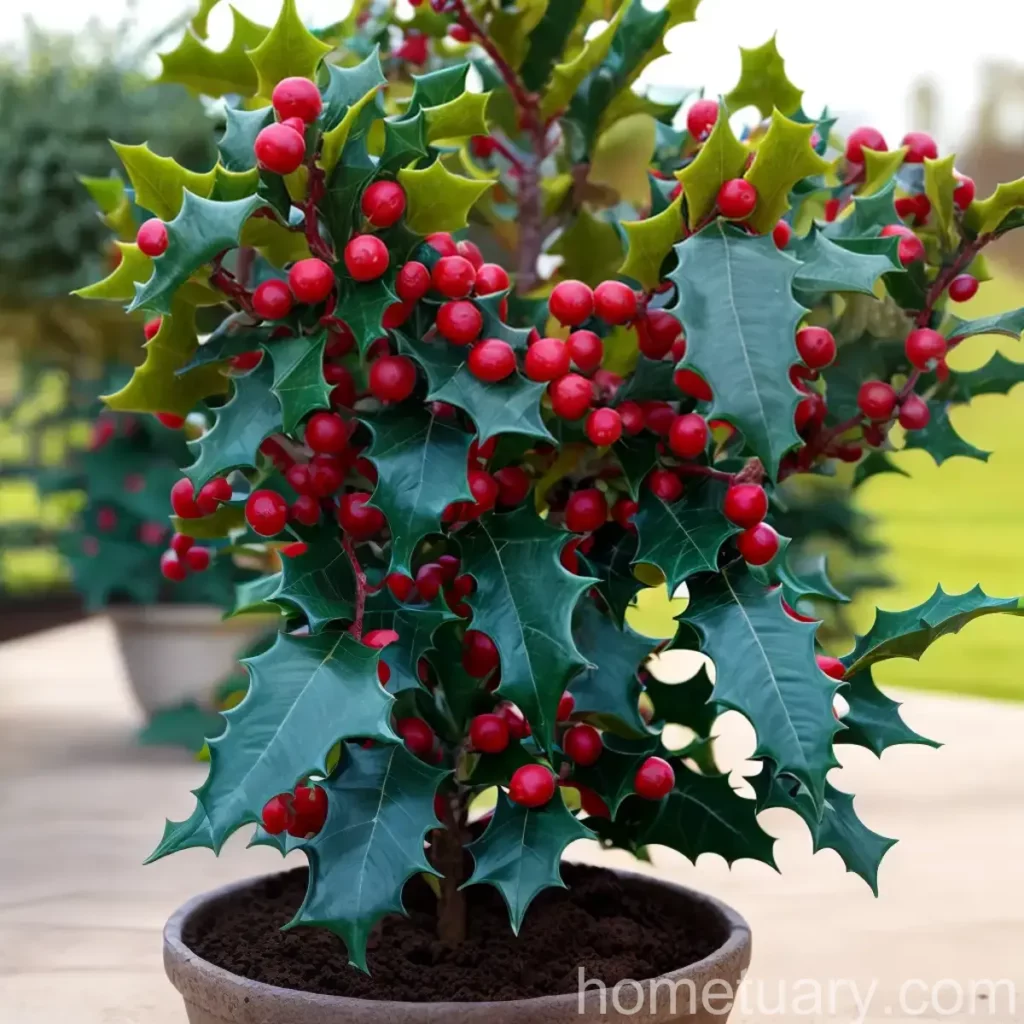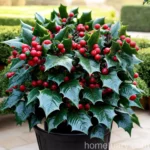Foster Holly (Ilex x attenuata ‘Fosteri’)
Gardening enthusiasts are constantly seeking beautiful, versatile, and rugged species to adorn their landscapes. One such notable plant is the foster holly, scientifically termed Ilex x attenuata ‘Fosteri’. Known for its glossy, dark green foliage and vibrant berries, this evergreen shrub has become increasingly popular among horticulturists and homeowners.
What is plant: foster holly (Ilex x attenuata ‘Fosteri’)?
Foster holly, a hybrid between Dahoon holly (Ilex cassine) and Chinese holly (Ilex cornuta), exhibits a symmetrical and pyramidal form. With a moderate growth rate, this plant typically reaches a height of 15-25 feet and spreads 10-15 feet wide. Its striking form and year-round visual appeal make it a sought-after choice in gardens and landscapes.
Key Takeaways – foster holly (Ilex x attenuata ‘Fosteri’)
- Scientific Name: Ilex x attenuata ‘Fosteri’
- Common Names: Foster holly, Foster’s holly
- Plant Type: Evergreen shrub
- Mature Height: 15-25 feet
- Mature Spread: 10-15 feet
- Growth Rate: Moderate
- Foliage: Glossy, dark green
- Berries: Bright red
This comprehensive guide will illustrate how to care for foster holly, including its cultural requirements, growth characteristics, uses, common pests and diseases, and much more.
Culture
Cultivating foster holly in your garden or landscape requires attention to various factors to ensure its optimum growth and development. Let’s delve into the cultural aspects of nurturing this beautiful evergreen shrub.
Uses
Ornamental Value: The foster holly is prized for its ornamental attributes, including its glossy green foliage, red berries, and pyramidal growth habit. It serves as an elegant backdrop in landscapes and is often used for hedges, screens, or as stand-alone specimen plants.
Wildlife Habitat: The red berries produced by the foster holly attract birds during the winter months, making it a valuable food source for wildlife.
Water
Ensuring adequate water supply is crucial for the establishment and well-being of foster holly plants. Newly planted specimens require regular watering to promote root establishment. Once established, the plant exhibits good drought tolerance but benefits from occasional deep watering during prolonged dry periods.
Sunlight
Foster holly thrives in partial to full sun, making it adaptable to a range of light conditions. However, providing it with full sun ensures optimal growth and berry production.
Fertilizer
Applying a balanced, slow-release fertilizer formulated for acid-loving plants in spring can provide the necessary nutrients for healthy growth and berry production. Additionally, mulching with organic matter can aid in retaining soil moisture and enriching the soil.
Soil
Foster holly performs best in well-draining, acidic soils with a pH range of 5.0-6.5. Amending the soil with organic matter and ensuring proper drainage is essential for the plant’s overall health.
Pruning
Pruning foster holly is generally minimal and primarily aimed at shaping the plant and removing any dead or damaged branches. Regular pruning can help maintain its desired form and size. It is advisable to conduct any major pruning tasks during the plant’s dormant season to minimize stress.
Propagation
Propagating foster holly can be achieved through various methods, including seed propagation, semi-hardwood cuttings, and air layering. Each method has its own set of considerations and requirements, and gardeners can choose the most suitable approach based on their expertise and available resources.
Container Popularity
Given its adaptability and ornamental value, foster holly is also well-suited for container gardening. This allows gardening enthusiasts with limited space to enjoy the beauty of this evergreen shrub on patios, balconies, or even indoors when provided with adequate light and moisture.
Common Diseases
While foster holly is relatively resistant to many diseases, it is susceptible to a few common issues that can impact its health and appearance. Understanding these diseases and their symptoms can aid in timely intervention and management.
Disease Diagnosis
Phytophthora Root Rot: This fungal disease can lead to the decline of the plant, causing wilting, yellowing of leaves, and eventual death. Ensuring well-draining soil and proper irrigation can help prevent this disease.
Leaf Spot: Foster holly may be susceptible to leaf spot diseases caused by various fungi. Symptoms include the formation of spots on the leaves, which can eventually lead to defoliation. Proper sanitation and fungicidal treatments can help manage this issue.
Common Pests
Several pests may pose a threat to foster holly, potentially impacting its growth and overall vigor. Vigilance and early detection are crucial in managing these pests effectively.
Botanist’s Tips
- Ensure the plant is placed in well-draining soil to prevent waterlogging, which can lead to root diseases.
- Regularly monitor the plant for signs of pests and diseases, and promptly address any issues that arise.
- Proper pruning and shaping can help maintain the plant’s desired form and promote healthy growth.
Fun Facts
- Foster holly is named after Liberty Hyde Bailey Foster, an American horticulturist known for his significant contributions to the field.
- In addition to its ornamental value, foster holly has been traditionally used for decorative purposes during the holiday season, with its bright red berries adding festive charm to wreaths and arrangements.
Links to External Resources
For further information and detailed insights on foster holly (Ilex x attenuata ‘Fosteri’), refer to the following resources:
- University of Florida IFAS Extension: Ilex x attenuata ‘Fosteri’
- Mississippi State University Extension: Foster Holly
- North Carolina State University Extension: Plant Propagation by Stem Cuttings
With its stunning foliage, vibrant berries, and adaptability to various growing conditions, foster holly (Ilex x attenuata ‘Fosteri’) remains a beloved choice for gardeners and landscapers seeking an elegant and enduring addition to their outdoor spaces. By understanding its cultural requirements, propagation methods, and potential challenges, enthusiasts can ensure the successful establishment and longevity of this exceptional evergreen shrub.















